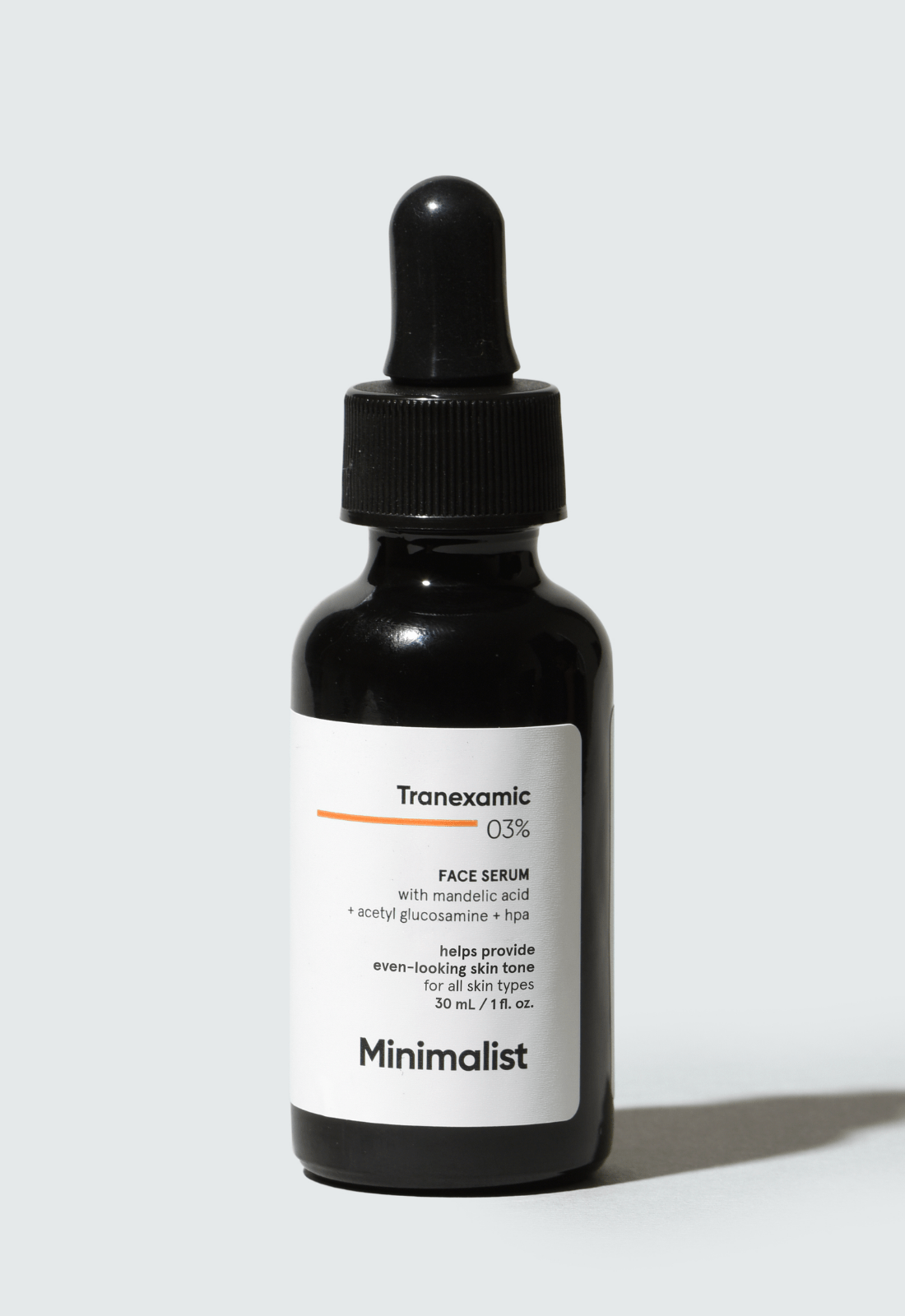Why it's special
Made with 3% Tranexamic Acid, which is a derivative of the amino acid lysine. It reduces the activity of melanocyte tyrosinase thereby treating melasma, UV-induced hyperpigmentation, and other post-inflammatory hyperpigmentation
This formula further contains 3% Mandelic Acid (a type of AHA) which gently exfoliates & further reduces post-inflammatory hyperpigmentation (like acne scars)
Contains 1% HPA (Hydroxyphenoxy Propionic Acid), which is proven to prevent melanogenesis better than ascorbyl glucoside, kojic acid, and arbutin. It also has equivalent efficacy to hydroquinone without cytotoxicity
Our source for HPA is Radianskin, which is a high performance active developed by BASF, Germany
 |
Skin concerns it targets Acne scars · Hyperpigmentation · Melasma · PIE (Post Inflammatory Erythema) |
|---|---|
 |
Suitable for All skin types |
 |
Highlights Fragrance free · Essential Oil Free · Non-comedogenic |
| pH range 3.8 – 4.8 |
About this product
After cleansing and toning your face, take 2-3 drops of serum on your fingertips with the dropper. Apply it on the face by gently tapping it on the skin. With a circular motion, evenly spread the serum and allow your skin to absorb it.
When to use: PM. Start with every alternate day and after 2 weeks of usage, use it everyday.
Ingredients
Tranexamic Acid
Tranexamic acid decelerates processes that increase tyrosinase activity by interfering with plasmin activity, and in turn, indirectly inhibiting melanogenesis. Studies have shown that Tranexamic acid, when applied topically, shows results similar to Hydroquinone in reduction of hyperpigmentation
HPA (Hydroxyphenoxy Propionic Acid)
It inhibits melanin transfer with great efficacy and prevents UVB damage. HPA is clinically proven to visibly reduce dark spots within two weeks
Mandelic Acid (3%) + Salicylic ACid (0.3%)
The combination removes the dead cells from the top of the skin, boosting the performance of Tranexamic Acid and Hydroxyphenoxy Propionic Acid, hence accelerating the reduction of hyperpigmentation and melasma
Aqua, Avena Sativa (Oat) Kernel Extract, Tranexamic Acid, Dimethyl Isosorbide, Mandelic Acid, Ethoxydiglycol, Pentylene Glycol, Methylpropanediol, Acetyl Glucosamine, Hydroxyphenoxy Propionic Acid, Sodium Hyaluronate, Salicylic Acid, Xanthan Gum, Lecithin, Phenoxyethanol, Sclerotium Gum, Pullulan, Ethylhexylglycerin, Curcuma Longa (Turmeric) Root Extract, Trisodium Ethylenediamine Disuccinate
You may also like
Frequently Asked Questions
Does it help with hyperpigmentation?
Yes, Tranexamic Acid has been shown to reduce hyperpigmentation. Our formula also contains Hydroxyphenoxy Propionic Acid which has been studied & found to reduce melanogenesis by up to 86%.
How long can it take to show results?
Yes, Tranexamic Acid has been shown to reduce hyperpigmentation. Our formula also contains Hydroxyphenoxy Propionic Acid which has been studied & found to reduce melanogenesis by up to 86%.
How do I know if I have PIH or PIE?
While they may sound similar, PIH and PIE are different. PIH or Post-Inflammatory Hyperpigmentation represent pigmented (brown or black) spots caused by an inflammatory reaction, resulting in overproduction of melanin. A typical example is brown marks left after acne. PIE or Post-Inflammatory Erythema refers to the red / dark red marks left behind after inflammation (like acne). This happens because the capillaries near the skin surface gets damaged by the inflammation, which results in small red marks. So PIH is pigmented and looks brown / dark brown in color and PIE looks like a clogged blood inside the skin and looks red/ dark red in color.Since more research is needed on the impact of topical SA on fetures or babies, pregnant and breastfeeding, women should consult their doctor before including SA into their routine. People with specific skin conditions or health issues shall also consult their doctor before using any direct acid.







